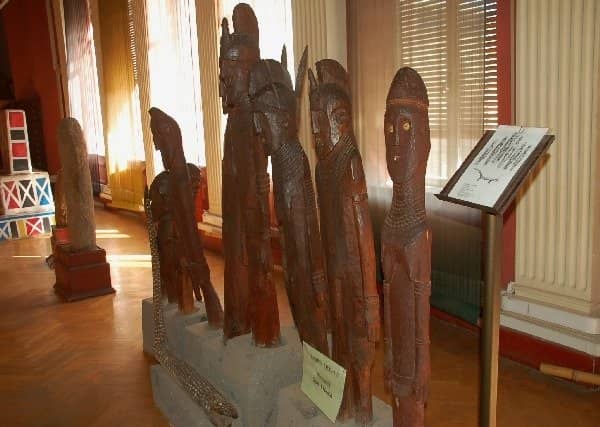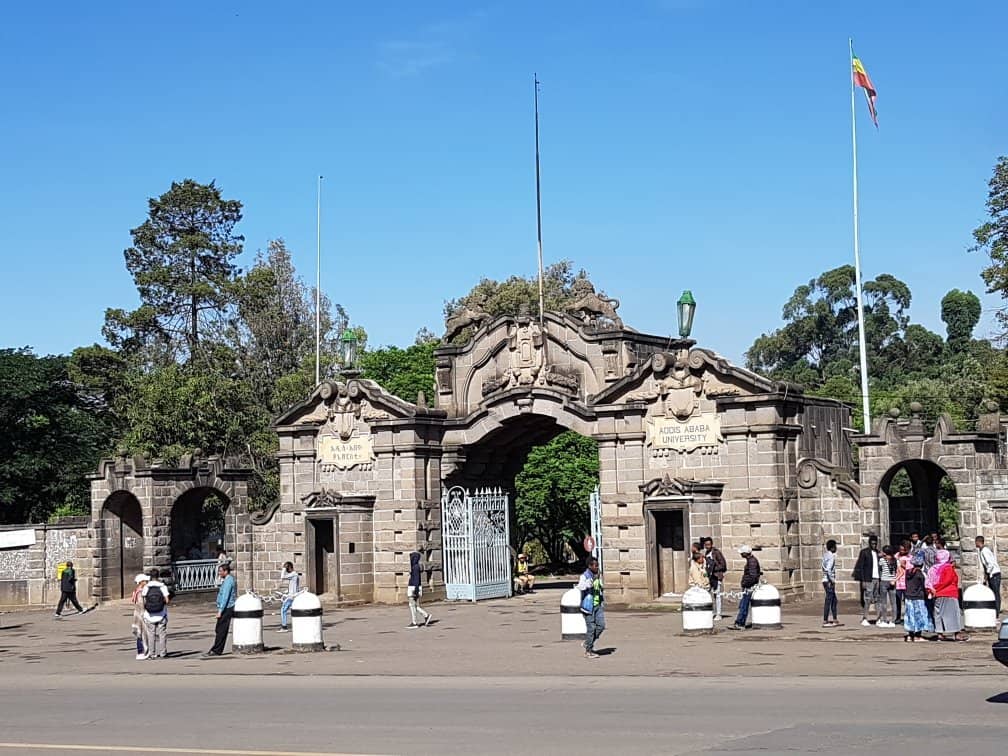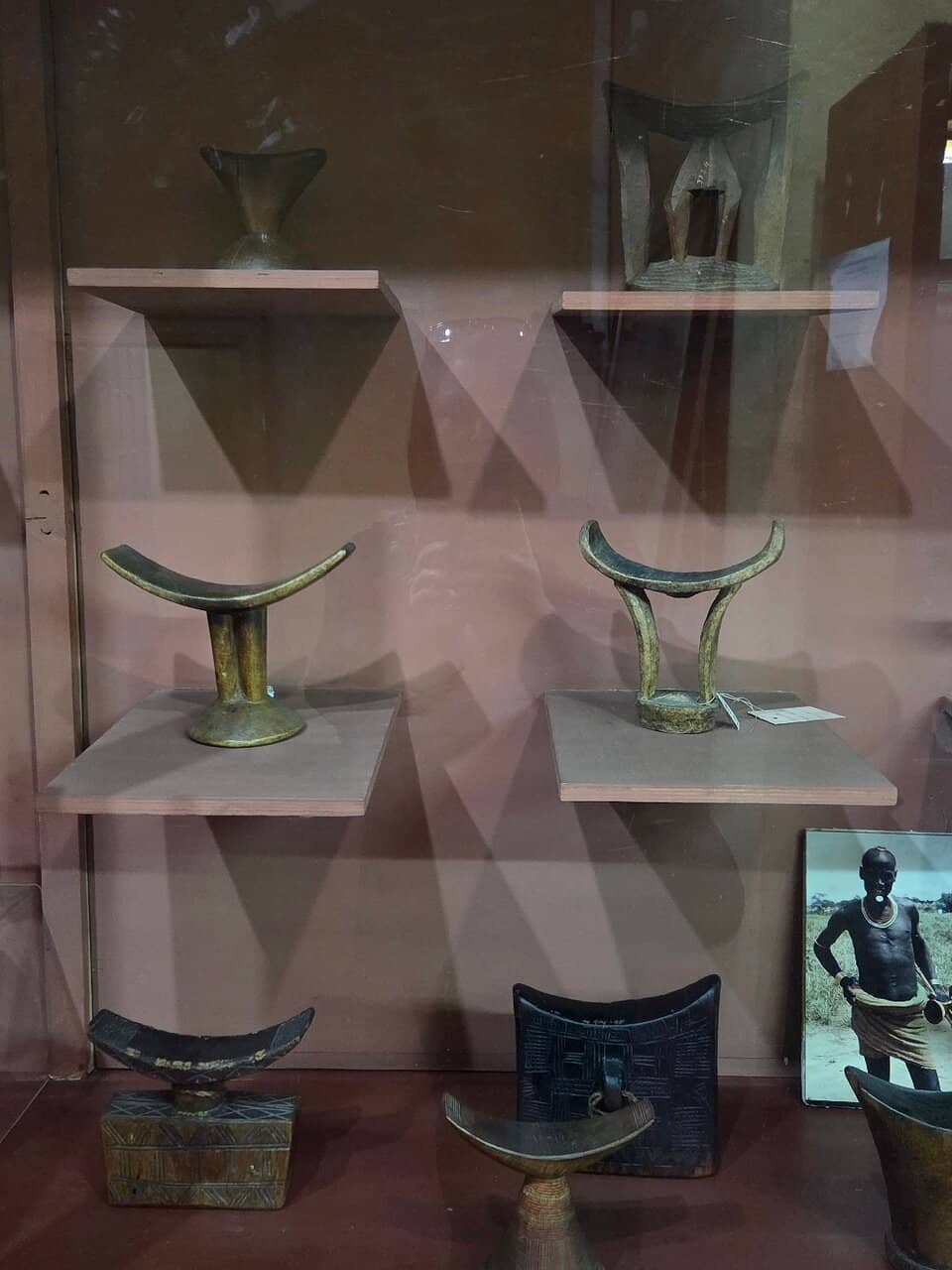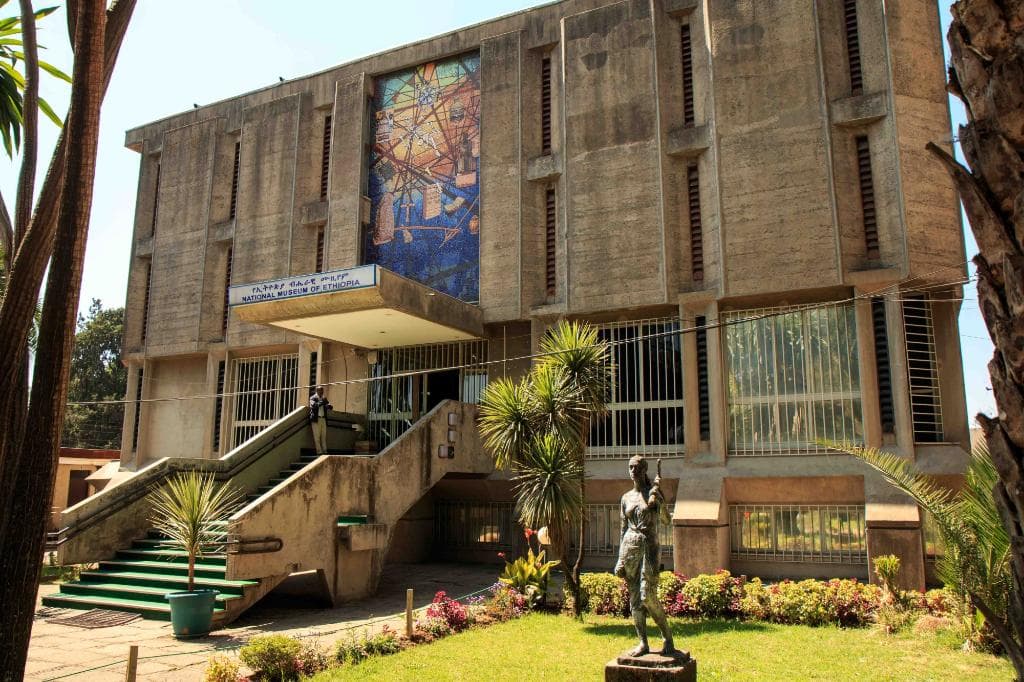
Ethnological Museum Addis Ababa University
Explore Emperor Haile Selassie's former palace, showcasing Ethiopian culture, history, and diverse tribal traditions.

Highlights
Must-see attractions

Social
From TikTok & Reddit
Best Time
Fewer crowds, better focus

Ethnological Museum Addis Ababa University
Best Time
Fewer crowds, better focus

Highlights
Must-see attractions
Explore Emperor Haile Selassie's former palace, showcasing Ethiopian culture, history, and diverse tribal traditions.
"A fascinating glimpse into Ethiopia's imperial past and rich cultural tapestry."

🎯 Hire a Guide
Enhance your understanding of exhibits with local insights. Ask at the entrance!
🚶♀️ Explore the Campus
The museum is within Addis Ababa University; enjoy a walk around the green environment.

Highlights
Discover the most iconic attractions and experiences

Emperor Haile Selassie's Residence
Inside the museum
Step into the former imperial family's bedroom and see the splendor of the palace.

Tribal Customs & Traditions
Exhibition halls
Discover artifacts showcasing the diverse cultures and lifestyles of Ethiopia's various regions.

Ethiopia's History of Resistance
Exhibition halls
Learn about Ethiopia's wars against Italian invaders and its proud history of never being colonized.
Plans like a pro.
Thinks like you
Planning Your Visit
Emperor's Palace Charm
Navigating Exhibits
Best Times
Insider Tips
from TikTok, Instagram & Reddit
🎯 Hire a Guide
Enhance your understanding of exhibits with local insights. Ask at the entrance!
🚶♀️ Explore the Campus
The museum is within Addis Ababa University; enjoy a walk around the green environment.
⏳ Allow Ample Time
There's a lot of history here; you could spend hours exploring.
📸 Respectful Photography
Check for any restrictions before taking photos inside the palace rooms.
Tips
from all over the internet
🎯 Hire a Guide
Enhance your understanding of exhibits with local insights. Ask at the entrance!
🚶♀️ Explore the Campus
The museum is within Addis Ababa University; enjoy a walk around the green environment.
⏳ Allow Ample Time
There's a lot of history here; you could spend hours exploring.
📸 Respectful Photography
Check for any restrictions before taking photos inside the palace rooms.
💰 Affordable Entry
The entrance fee is quite low, making it a budget-friendly cultural experience.
What Travellers Say
Reviews Summary
Visitors find the Ethnological Museum a valuable stop for its historical significance, particularly the former palace of Emperor Haile Selassie and its diverse cultural exhibits. However, some reviewers note that the presentation and explanation of artifacts could be improved, with a desire for clearer wayfinding and better conservation efforts. Despite these points, it's considered an affordable and insightful glimpse into Ethiopian heritage.
"This museum is a collection of Haile Selassies items , outfits , house and a touch of traditional items from different regions in Ethiopia. It is inside the university so you can also walk around and see different buildings . It has a great green environment"
Cynthia Kamau
"The museum is located in Addis Ababa university campus and houses exhibits on all aspects of Ethiopia, including tribal customs, wars against the Italians, and emperor Haile Selassie’s home.
Over a nice collection of items, although there is significant room for improvement in terms of wayfinding and explanation."
Chua Hsieh Li
"What an interesting museum. I stopped here on a day trip and was happy I did; there's a lot of history in this museum and you could spend hours here."
Heather S.
What People Like
What People Dislike
Frequently Asked Questions
🚇 🗺️ Getting There
The museum is located within the Addis Ababa University campus. You can reach it by taxi or ride-sharing services. It's a good idea to mention 'Ethnological Museum' or 'Addis Ababa University' to your driver.
Parking might be available on the university campus, but it's often easier and more convenient to use taxis or ride-sharing services to reach the museum directly.
Yes, the museum is part of the university campus, and you can explore other parts of the university. Nearby attractions like the National Museum of Ethiopia are also accessible.
Taxis and ride-sharing apps are popular and convenient for getting around Addis Ababa. Walking tours are also a great way to see the city's highlights.
The museum is located within the Addis Ababa University campus. The National Museum of Ethiopia is a notable nearby attraction.
🎫 🎫 Tickets & Entry
Opening hours can vary, but generally, museums in Addis Ababa are open during typical daytime hours. It's best to check locally or confirm with your guide.
The entrance fee is very affordable, often around 10 Ethiopian Birr, making it an accessible cultural experience.
Advance booking is typically not required for the Ethnological Museum. You can usually purchase tickets upon arrival.
Information on specific discounts is not widely available, but the general admission price is very low, so it's already quite budget-friendly.
Yes, the museum is equipped with a shop related to the exhibits, where you can find souvenirs.
🎫 🏛️ Onsite Experience
You'll find artifacts, crafts, and religious icons tracing Ethiopian culture, including Emperor Haile Selassie's former home and personal items, as well as displays on tribal customs and historical events.
The museum offers a glimpse into Ethiopian history and culture, which can be educational for older children. However, the presentation might be less engaging for very young ones.
Yes, tour guides are available at the museum, and hiring one can greatly enhance your understanding of the exhibits.
Some visitors have noted that exhibits could benefit from better wayfinding and explanations, and some areas may show signs of wear.
Information on wheelchair accessibility is limited. Given it's a historic palace, accessibility might be challenging in certain areas.
📸 📸 Photography
Photography policies can vary. It's advisable to check for signage or ask staff before taking pictures, especially in the former imperial residence.
Typically, areas with sensitive artifacts or within private chambers like the imperial bedroom might have restrictions on photography.
The exterior of the palace, the university campus grounds, and some of the more open exhibition halls can offer good photo opportunities.
Flash photography is generally discouraged in museums to protect artifacts from light damage. Always confirm the policy.
The traditional attire, religious icons, and historical artifacts provide unique visual elements for photography, capturing the essence of Ethiopian heritage.
For Different Travelers
Tailored advice for your travel style
👨👩👧 Families with Kids
To make the visit more engaging, consider hiring a guide who can explain the exhibits in a child-friendly manner. Focus on the more visually interesting artifacts and the stories behind them. The university campus itself also offers space for children to move around.
🏛️ History Buffs
💰 Budget Travelers
This makes it an ideal activity for those looking to immerse themselves in Ethiopian history and culture without overspending. Combine it with a walk around the university campus for a fulfilling and economical experience.
Deep Dives
In-depth insights and expert knowledge
A Glimpse into Imperial Life
Beyond the imperial residence, the museum showcases a rich collection of artifacts that represent the diverse cultures and lifestyles across Ethiopia. These exhibits cover various aspects of Ethiopian heritage, from tribal customs to historical events like the wars against the Italians. The museum aims to provide educational opportunities and promote understanding of the nation's cultural resources.
While the historical significance and the palace setting are compelling, some visitors have pointed out areas for improvement. These include the need for clearer wayfinding and explanations for the exhibits, as well as concerns about the conservation and presentation of some items. Despite these critiques, the museum remains a valuable resource for understanding Ethiopia's multifaceted history and culture.
Understanding Ethiopian Heritage
The museum's collection spans a wide array of items, from traditional crafts and religious icons to historical documents and personal effects of Emperor Haile Selassie. This breadth allows visitors to gain insights into the social fabric, artistic expressions, and historical struggles of the Ethiopian people. The museum's location within the university also fosters an academic environment for research and learning.
For those seeking a deeper understanding of Ethiopia's unique identity, the Ethnological Museum provides an invaluable experience. It's a place where the past is preserved and presented, encouraging a greater appreciation for the country's rich and complex heritage.

Social
from TikTok, Instagram & Reddit